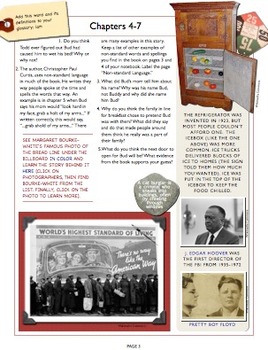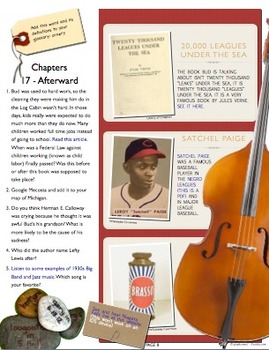Bud, Not Buddy — Hyperlinked PDF project to accompany novel
- Zip
- Internet Activities
- Webquests
Description
There are so many historical figures named in the novel Bud, Not Buddy that I knew a HyperDoc would complement it perfectly. This PDF is designed to be used on a computer or tablet (perfect for iPads or Chromebooks!).
This document includes more than 35 links to websites with articles, videos, audio recordings, and activities designed to aid and deepen comprehension and spark critical thinking—all in line with Common Core—and some just for fun. Your students are just click away from activities, additional research, videos, biographies, historical documents, and more. With so many enrichment links, this is ideal for early finishers.
It provides the perfect platform for doing an in-depth, cross-curricular novel study incorporating social studies and language arts. The book covers the depression, the establishment of unions, and the difficulties faced by African Americans during the 1930s. This is also a great resource for distance learning and homeschoolers!
updated: January 2024





